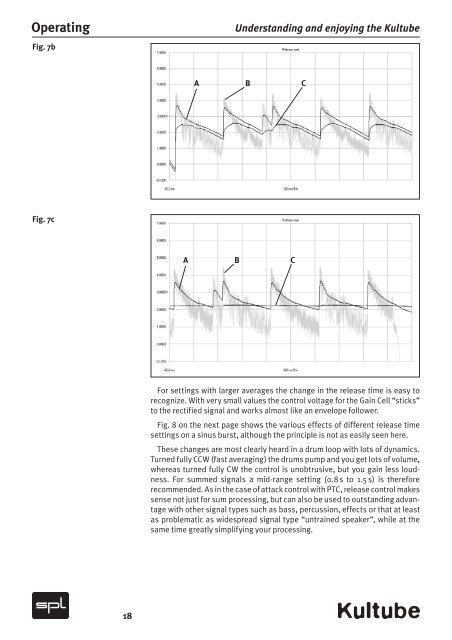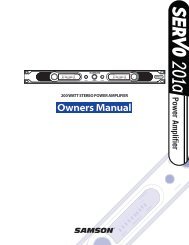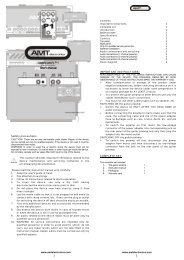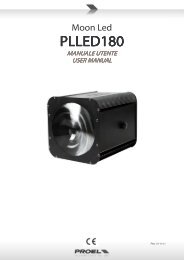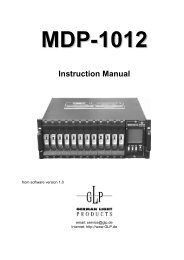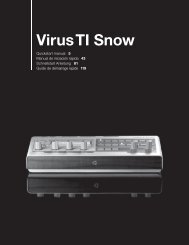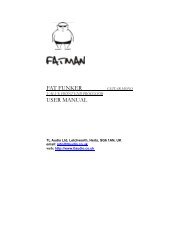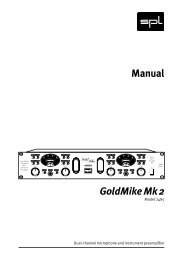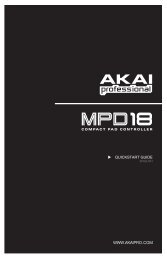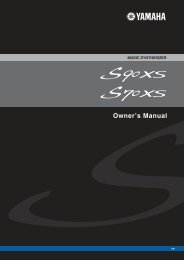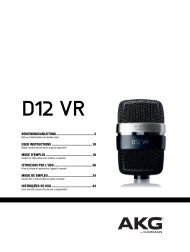Kultube
Kultube
Kultube
Create successful ePaper yourself
Turn your PDF publications into a flip-book with our unique Google optimized e-Paper software.
Operating<br />
Understanding and enjoying the <strong>Kultube</strong><br />
Fig. 7b<br />
A B C<br />
Fig. 7c<br />
A B C<br />
For settings with larger averages the change in the release time is easy to<br />
recognize. With very small values the control voltage for the Gain Cell “sticks”<br />
to the rectified signal and works almost like an envelope follower.<br />
Fig. 8 on the next page shows the various effects of different release time<br />
settings on a sinus burst, although the principle is not as easily seen here.<br />
These changes are most clearly heard in a drum loop with lots of dynamics.<br />
Turned fully CCW (fast averaging) the drums pump and you get lots of volume,<br />
whereas turned fully CW the control is unobtrusive, but you gain less loudness.<br />
For summed signals a mid-range setting (0.8 s to 1.5 s) is therefore<br />
recommended. As in the case of attack control with PTC, release control makes<br />
sense not just for sum processing, but can also be used to outstanding advantage<br />
with other signal types such as bass, percussion, effects or that at least<br />
as problematic as widespread signal type “untrained speaker”, while at the<br />
same time greatly simplifying your processing.<br />
18


